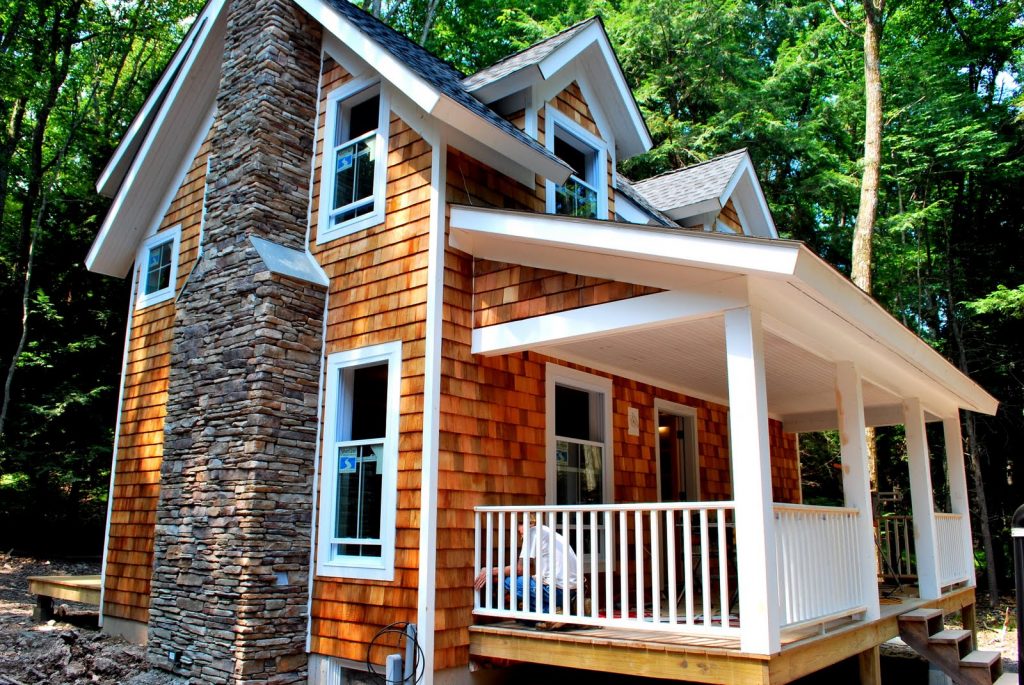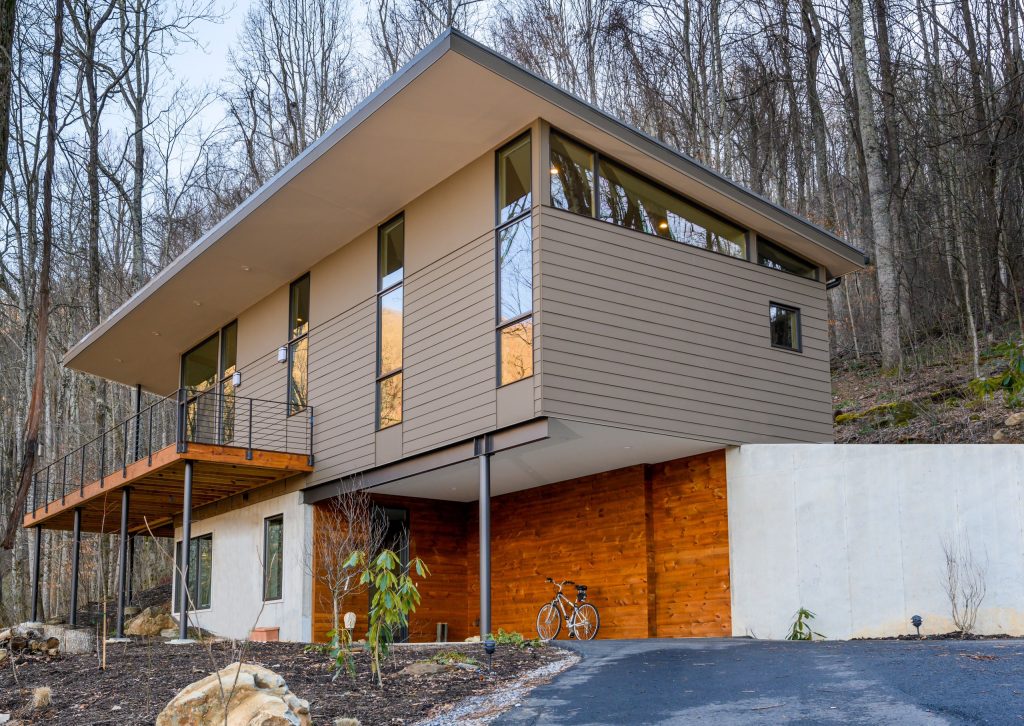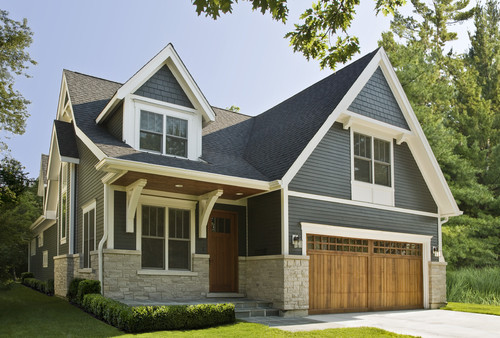Wood has been used as a building material for thousands of years, being second only to stone in terms of its rich and storied history in the world of construction. Human beings have harnessed the unique qualities of wood to build a seemingly unlimited variety of structures. This versatile material is commonly used to build houses, shelters and boats, but it is also extensively used in the furniture and home decor industry as well.
Perhaps one of the biggest advantages of using wood as a building material is that it is a natural resource, making it readily available and economical. It is very strong in relation to its weight, and it provides good insulation from the cold. Wood is highly machinable, and can be fabricated into all kinds of shapes and sizes to fit practically any construction need. Wood is also the perfect example of an environmentally sustainable product; it is biodegradable and renewable, and carries the lowest carbon footprint of any similar building material. In addition, no high-energy fossil fuels are required to produce wood, unlike other common building materials such as brick, steel or plastic.
Lumber vs Timber
The words “lumber” and “timber” are often used interchangeably to refer to wood used in construction work, but there has been considerable debate as to which term should apply in a given scenario. Pieces of wood that are smaller than 5 inches wide by 5 inches thick (regardless of length) are generally referred to as lumber. These pieces are machine-planed and sawn to fit certain dimensional specifications (e.g., 2×4″, 2×8″, etc.) and are primarily used in residential construction. Pieces of wood over 5 inches wide by 5 inches thick (regardless of length) are referred to as timber, and any timber pieces that exceed 8″ wide by 8″ thick are referred to as beams. As timber pieces are larger in dimension, they are often used to construct the frames of large structures such as buildings and bridges. Timber is also commonly utilized in large quantities for railroad ties, mine shaft supports and crossbeams on utility poles.
Another type of wood commonly used in construction is known as engineered wood. As its name implies, engineered wood is the product of a more intricate fabrication process in which various wood strands, fibers, veneers, or other forms of wood are glued together to form a type of composite material that is used for specific construction applications. Common examples of engineered wood include plywood, glued laminated timber (a.k.a. “glulam”), oriented strand board, fiberboard, and particle board. Engineered wood products are commonly used in a wide variety of residential, commercial and industrial construction projects.

Types of Wood
Wood has traditionally been classified into two primary categories: Hardwood (any leaf-bearing tree) and softwood (any cone-bearing tree). As with most other general classifications, this can get somewhat confusing due to the fact that there are some leaf-bearing trees that can have relatively soft wood, while some coniferous trees that can have rather hard wood. Generally speaking, however, hardwoods are by and large considered to be heavier and more dense than softwoods. Hardwoods are commonly used in the construction of walls, ceilings and floors, while softwoods are often used to make doors, furniture and window frames. Some examples of the most popular hardwoods include oak, maple, mahogany, cherry, walnut, and teak. Commonly used softwoods include pine, hickory, beach, ash, birch, and cedar.

Lumber Grades
The National Hardwood Lumber Association (NHLA) of America has created a grading system to rate various types of lumber, primarily based on the amount of defects that can be found in a board. Below is a brief summary of NHLA grades for both hardwood and softwood lumber.
Hardwoods
- First and Seconds (FAS) – This is the highest grade possible for hardwood lumber, and is mainly suited for high-quality furnishings, solid wood mouldings and interior joinery. Contains 83% usable material on one face (minimum 6″ x 8″ board size).
- Select (Sel) – Also contains 83% usable material, but for a smaller minimum board size (4″ x 6″) than FAS.
- 1 Common (#1 Com) – Contains 66% usable material on a 3″ x 4″ board face.
- #2 Common (#2 Com) – Contains 50% usable material on a 3″ x 4″ board face.
Softwoods
- C Select – Almost completely free of all defects; commonly used for cabinets and interior trim
- D Select – Comparable to C Select, but may contain small knots (no bigger than the size of a dime)
- 1 Common – Contains small, tight knots that won’t fall out; offers a high-quality knotty appearance (e.g., pine)
- 2 Common – Very similar to 1 Common, but with slightly larger knots; often used in shelving and paneling
- 3 Common – Larger knots that what are found in 2 Common; typically used for crates, boxes and fences.
Benefits of Wood in Construction
Wood carries several benefits that make it an excellent candidate for use in a wide array of construction projects. One such benefit is its thermal properties, which give it an advantage in terms of its resistance to high temperatures. Unlike steel, which can expand or even collapse in high heat, wood actually dries out and becomes stronger as the heat increases. In addition, the heat conductivity of wood is relatively low in comparison to other materials such as aluminum, marble, steel, or glass. This gives wood an advantage in terms of being used in various applications such as matches, hardware equipment handles, wall coverings, and ceilings.
Wood also contains highly-sought-after acoustic properties. It can absorb sound and echoes, and is a favorite material of choice for the construction of structures where proper acoustics is important, such as concert halls. Wood is resistant to electrical currents, making it an optimal material for electrical insulation. Another important characteristic of wood is its tensile strength, which is its ability to bend under pressure without breaking. Wood is exceptionally light in proportion to its tensile strength, making it the preferred construction choice for surfaces that take a constant beating such as basketball courts and bowling lanes. Tensile strength is also one of the main reasons for choosing timber as a building material; its remarkably strong qualities make it the perfect choice for heavy-duty building materials such as structural beams.
Of the many construction materials that a person can choose from, wood stands out as a unique and amazingly versatile product. Its aesthetic appeal, tensile strength, insulation qualities, and ease of fabrication enable it to remain a favorite choice for use in an extensive array of construction applications.
The experts here at Phoenix Siding know how to work with wood – no wonder some of our most popular services are our cedar siding installations. Call us today at 250-758-3818 or email us at blake@phoenixsiding.ca today to find out how we can get your next project off the ground.




